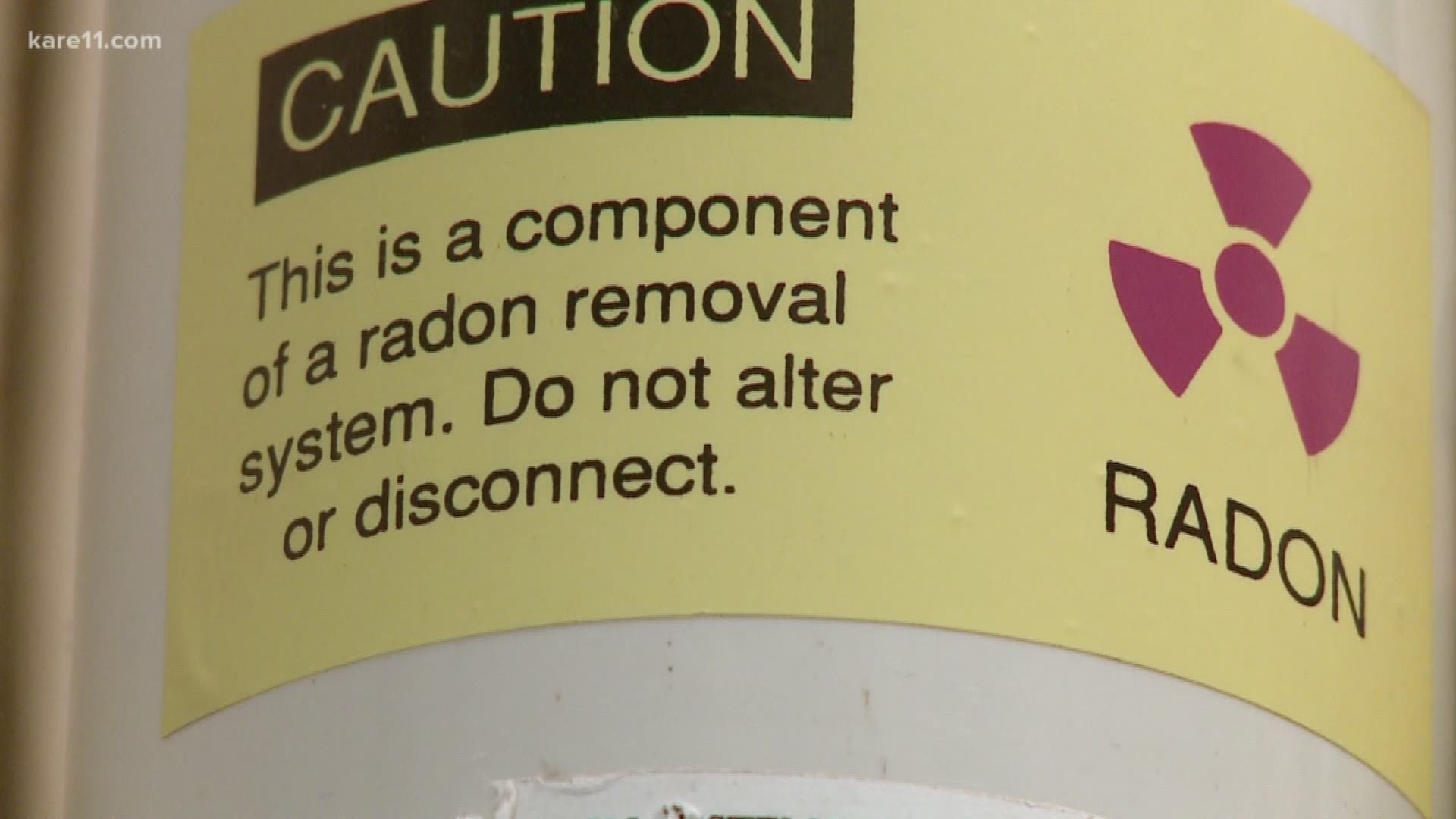Only one-third of the school districts located in the eight Minnesota counties where radon concentrations are highest have been checked since 2012 for the odorless, colorless gas, a known carcinogen blamed every year for more than 20,000 lung cancer deaths nationwide.
Earlier this month, KARE 11 exposed major gaps in how Minnesota schools test for radon.
That led to outcry from parents and educators -- and promises of reform from the governor and lawmakers.
Records showed just 53 of the 331 school districts in Minnesota have reported they tested their classrooms for radon since 2012, despite state and federal guidelines calling for buildings to be tested at least every five years. KARE 11 also found wide disparities as to whether, when and how the 20 largest school districts in the Twin Cities metro area are testing their buildings for radon.
But how about districts located in places known to have some of the highest radon levels in the state?
In Minnesota, 80 percent of counties are listed as radon hot zones.
Brown, Cottonwood, Jackson, Lincoln, Murray, Redwood, Renville and Rock counties are the worst of the worst – places where at least three out of every four homes tested had radon readings at or above the U.S. Environmental Protection Agency’s “action level” of 4.0 picocuries.
KARE 11 Investigates asked the 25 school districts located in those counties for the results of any radon testing they performed since 2012. Among the findings:
- Eleven districts reported no radon testing over the past five years. They are the Hills-Beaver Creek School District in Rock County; the Bird Island-Olivia-Lake Lillian, Buffalo Lake-Hector-Stewart and Renville County West school districts in Renville County; the Westbrook-Walnut Grove and Mountain Lake districts in Cottonwood County; the Comfrey Public School District in Brown County; the Milroy and Wabasso school districts in Redwood County; and the Hendricks and the Ivanhoe school districts in Lincoln County.
- Four districts said they haven’t tested their buildings in the past 15 years. They are the Fulda and Murray County Central school districts in Murray County; the Springfield school district in Brown County; and the Red Rock Central school district in Cottonwood County.
- And two districts, Russell-Tyler-Ruthton Public Schools in Lincoln County and Redwood Area School District in Redwood County could provide no record their schools have ever been tested.
- Only eight districts had tested their buildings since 2012. They are Luverne public schools in Rock County; the Lake Benton district in Lincoln County; Windom public schools in Cottonwood County; the Cedar Mountain district in Redwood County; the New Ulm and Sleepy Eye districts in Brown County; and the Heron Lake-Okabena and Jackson County Central districts in Jackson County.
Testing for radon and remediation is relatively simple and not that expensive, especially compared to the consequences of exposing students, teachers and staff to a known cancer risk. Medical research suggests that children are especially vulnerable.
School Radon Testing: A Sampling of Minnesota School Districts
Is your school district testing its buildings for radon, the leading cause of lung cancer among non-smokers? Search by district, school name or click on our interactive map to find out what the 20 biggest Twin Cities area districts are – or are not – doing. Also included are test results from non-metro school districts located in the eight counties with the highest radon levels in the state.
The database includes only those buildings tested since 2012.
App Users! If you are having trouble seeing this map, Click Here
“It’s estimated by the U.S. Environmental Protection Agency to cause over 21,000 lung cancer deaths per year in the United States alone,” said Dan Tranter, supervisor of the Indoor Air Unit for the Minnesota Department of Health.
Unlike some other states, Minnesota schools are not required to test their buildings.
After KARE 11 Investigates aired its first report earlier this month, legislation was introduced to require Minnesota school districts be tested for radon, just as they are already required to test for asbestos, lead and other hazardous substances.
But time ran out to get that bill passed this legislative session. Governor Dayton previously vowed to take executive action if that happened.
The governor’s office tells KARE 11 that both the Department of Education and Department of Health are reviewing the issue to come up with recommendations.
If you have a suggestion for an investigation,
or want to blow the whistle on fraud or government waste,
email us at: investigations@kare11.com

